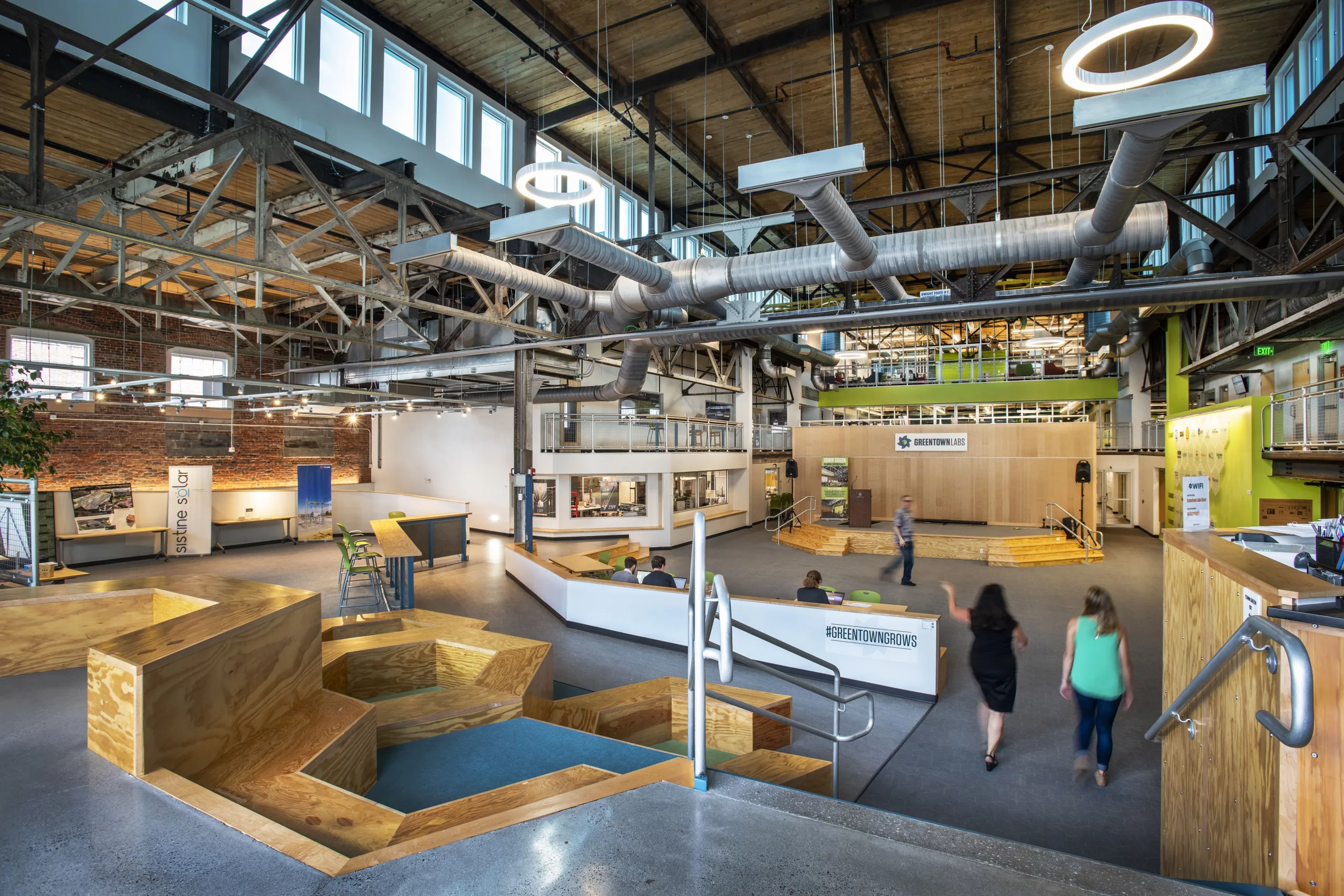A fusion company that needs to start its process with small explosions. A battery company that includes chemical storage, light manufacturing, and office. A green jet fuel replacement that also requires significant grid electricity. These companies are saving the world from climate change, they create jobs and economic development, but they often have challenges integrating with zoning and other municipal permitting. Here are some notes from a conversation between climate tech startup staff and a mix of municipal and government staff discussing the challenges of permitting climate tech and other emerging industrial uses in Massachusetts.
In Boston’s post-life-science era, the comparison with biotech’s past challenges sheds light on current climate tech hurdles. Initially, the government’s lack of familiarity with biotech’s needs posed barriers. However, over time, municipal staff became versed in biotech requirements, exemplified by Cambridge Zoning’s Recombinant DNA Ordinance, facilitating smoother integration into zoning categories. Biotech and climate tech also share elements of “materials development”, including chemical storage, flammable materials, office, research and development, and potentially other water and air permits required (climate tech may also include light industrial and prototyping of physical goods).
Startups move fast – they cannot afford risk and uncertainty from land use issues. Zoning that is unclear or requires a special permit is a risk, especially if that process can’t be initiated until after a lease is signed. Zoning that doesn’t allow changes in use over time can also be a risk if their needs change, such as if the company might need to add a chem lab in the future.
Is climate tech research and development, or manufacturing, or both, and when and where would that distinction actually matter? Thinking about how we might write better zoning to accommodate climate tech could use some of the following concepts:
Performance zoning: As emerging tech is evolving quickly, focus on regulating the nuisances of the use (noise, odor, vibration, traffic) rather than the use itself. This should give clear guidance upfront about what is allowed and allow growing companies the flexibility they need to add activities to their operation as they scale. Using performance rather than use also helps companies that have to combine several activities on the same site, for example a typical climate tech company (if there is such a thing) might require a mix of light manufacturing, research and development, office, chemical storage, and loading in the same space.
Life safety: Zoning is just one part of the overall process for permitting a climate tech use, companies also need building permits, fire permits, and other special permits for their uses. Zoning should ask questions like: what type of district this use belongs in, can it be in a mixed-use district, should it be by itself, can it be next to a daycare, or is there a risk of blowing up your neighbor. Let those other codes do their job and let zoning get out of the way where relevant. Bonus points for also having someone in the building or fire department who is the go-to for interpreting the code and working with the company on a case-by-case basis.
Predictable processes: Help climate tech companies save money on time on code consultants by giving them self-service information to quickly triage potential locations based on objective criteria. This will help the company confidently sign a lease in a community and know that they can grow their business there. I’m particularly interested in following up on this one to investigate what types of issues could be covered on an assessment form and how that can be integrated into a first pass at zoning review.
We’re writing zoning that fosters the flexible growth of climate tech companies and aligns community objectives. These adjustments can integrate climate tech into municipalities and enable their world-changing missions.

Leave a Reply